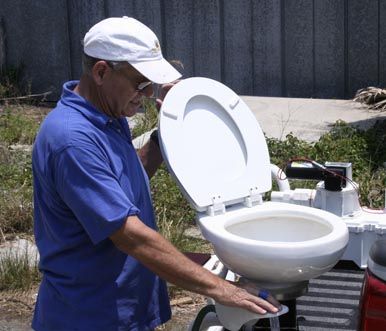Good hose is useless if the unions are not well clamped. Barbed hose end fittings should be snug and securely sealed and, of course, free of leaks.
All hoses fail. You can prolong the life of your hose and prevent odors by ensuring there are no loops that can trap sewage. The easiest way to identify a failed hose is to rub a clean cloth along it and sniff it every foot.
Rigid PVC tubing will contain odors as well, but it is only suitable for long, straight hose runs between the head and the holding tank. If there are many bends and unions, they will only introduce more potential for leaks.
Some head odors come from rotting organic matter, such as seaweed and krill in the intake line or holding tank. Boats that have ready access to a dock or adequate freshwater capacity (either in tankage or watermaker) may want to consider upgrading to a freshwater-flush system.
Saltwater heads will benefit from a freshwater flush as well. Some head odor problems can be resolved simply by a routine flush – closing the intake seacock and flushing freshwater through the head.
For advice on choosing and installing the best sanitation system for your boat, download Practical Sailor’s ebook Marine Sanitation Systems, Volume 1 – Marine Toilets. For a complete review of holding tanks and the gauges and sensors available to measure their levels, as well as installation tips, download Volume 2 – Plumbing and Odor Control. Or get the complete series containing both volumes.










































